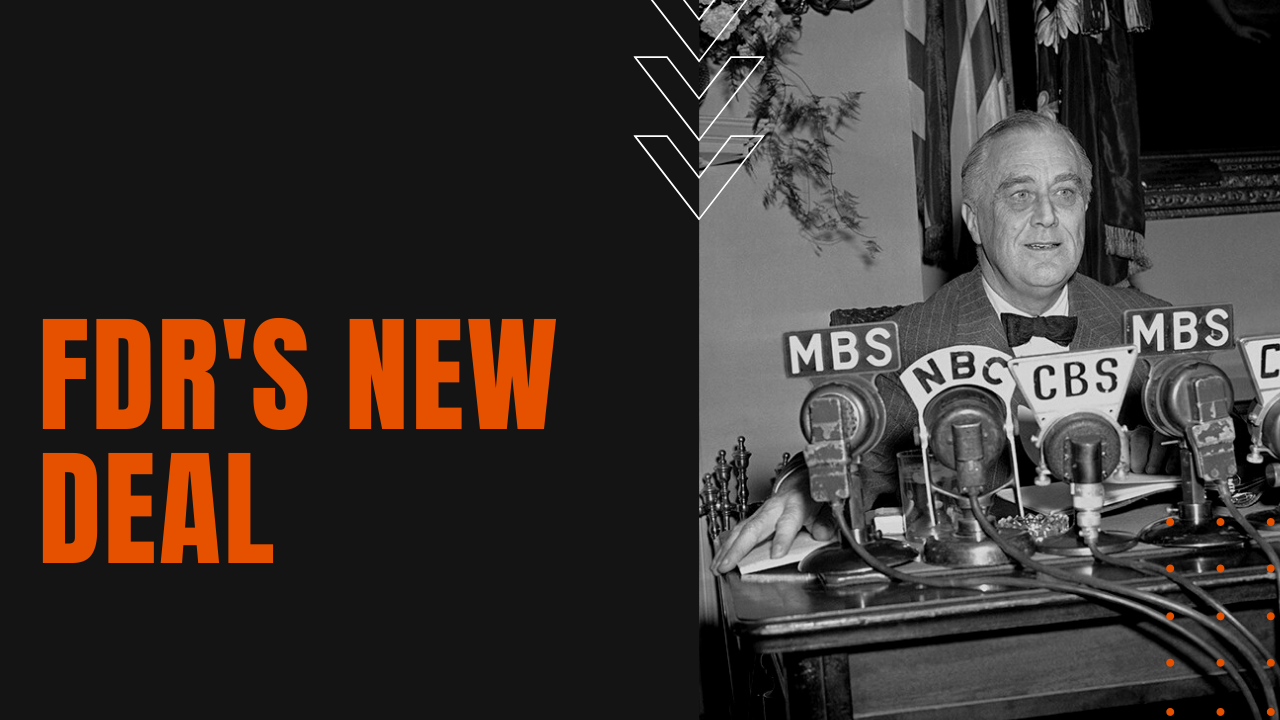FDR and the New Deal

On March the 4th, 1933, during the bleakest days of the Great Depression, newly elected President Franklin D. Roosevelt delivered his first inaugural address before 100,000 people on Washington’s Capitol Plaza.
“The only thing we have to fear is fear itself.”
Franklin d. roosevelt
After assuring Americans that he would “wage a war against the emergency,” the following day, Roosevelt declared a four-day bank holiday to stop people from withdrawing their money from teetering banks, and on March the 9th, Congress passed Roosevelt’s Emergency Banking Act, which reorganized the banks and closed the ones that remained hopelessly insolvent.
FDR’s First 100 Days
In his first fireside chat, Roosevelt urged Americans to put their savings back into banks, and by the end of the month, almost three-quarters of all American banks had reopened their doors. During the first 100 days of Roosevelt’s first term in office, FDR moved decisively to end Prohibition by an amendment to the U.S. Constitution, followed by the signing of the Tennessee Valley Authority Act or TVA, which allowed the federal government to build dams along the Tennessee River for flood control and the generation of inexpensive hydroelectric power.
Simultaneously, Congress passed a bill that paid farmers to fallow their fields in order to end agricultural surpluses and boost food prices. The following month saw the enactment of the National Industrial Recovery Act, which guaranteed workers the right to unionize and negotiate for higher wages and better working conditions.
Along with the passage of 12 other major laws, almost every American found something to be pleased about and something to complain about in FDR’s robust collection of bills, but it was clear to all that FDR was engaging the sort of direct and vigorous action he had promised in his inaugural address.
Second New Deal
Despite FDR’s efforts to stimulate the economy, the Depression worsened with high unemployment and low wages, obliging Roosevelt to launch a second, more aggressive series of New Deal programs in the Spring of 1935. Known as the Second New Deal, he created the Works Progress Administration or WPA, providing federally-funded jobs for the unemployed, which in turn improved the American infrastructure through the construction of post offices, bridges, schools, highways and parks.
Along with additional legislation to protect labor unions, in August of 1935, FDR signed the Social Security Act, which guaranteed pensions for working Americans, as well as unemployment insurance for workers laid off for reasons outside their own conduct and performance.
Most historians concur that Roosevelt’s New Deal era came to an abrupt end on December 8, 1941, when the United States entered World War Two, just one day after the Japanese bombed American naval assets at Pearl Harbor.
